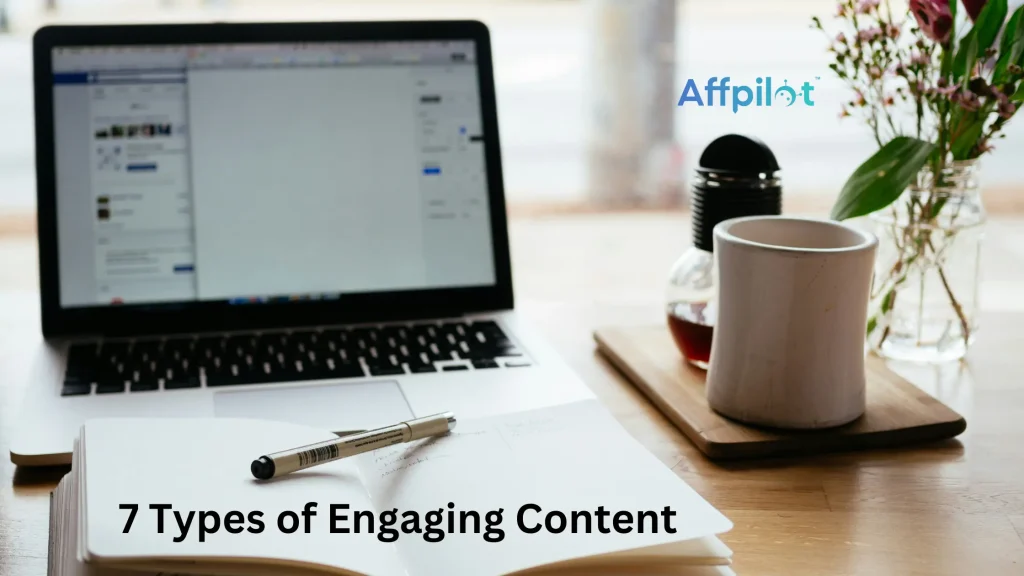Engaging Content Describes Enhance Interaction, Create Engagement, and Foster Growth
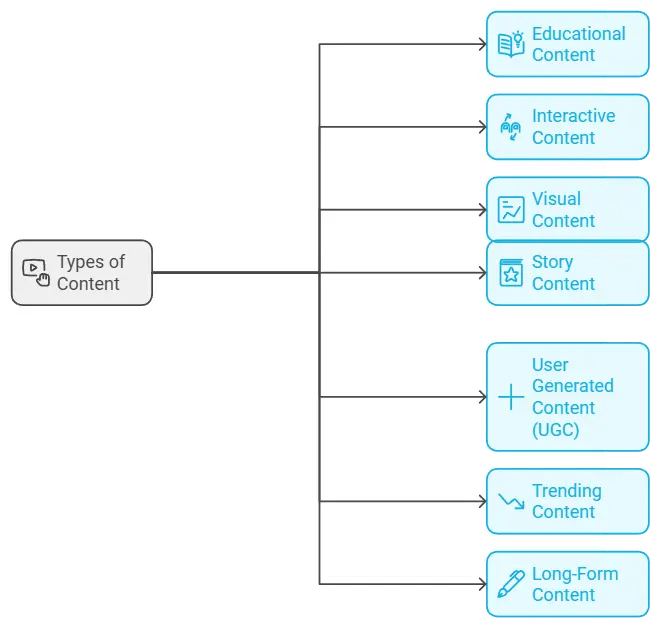
Table of Contents for Engaging Content
1. Educational Content
2. Interactive Content
3. Visual Content
4. Story content
5. User generated content (ugc)
6. Trending content
7. Long-Form Content
There are different types of engaging content that, if used, can capture the attention of the audience, but the efficiency of the approach varies from person to person.
Nonetheless, there is a method to ensure that a material appeals to most people. It could be applicable most of the time or reach a lesser audience at other times. However, assuming that you have a certain level of depth in your content and logic produced for a specific audience, the odds of success will grow significantly.
1. Educational Content: One of the Engaging Contents
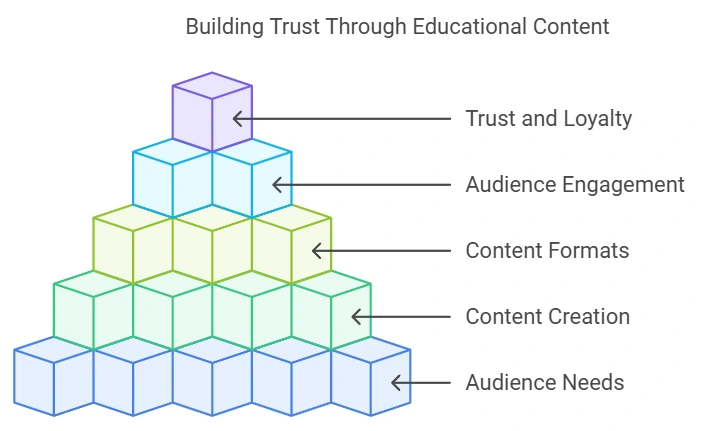
Educational material is among the most engaging types of engaging content as it addresses the needs of the people and, therefore, adds value. Whether it is an infographic, a how-to article, a video, or a collection of FAQs, this content allows people to learn, overcome challenges, and make decisions. By solving their problems, you don’t just draw attention, but you also gain credibility and trust in the field.
Educational material is known to entertain and relieve people because it provides valuable solutions and explains the more complex aspects concisely and detailedly.
For instance, if a person wishes to learn how to begin an affiliate marketing business, having someone present their detailed instructions can be helpful and make the customer respect the said individual even more. Apart from resolving issues, educational material is also an instrument of client loyalty as it establishes trust in the audience about the amount of valuable information the provider can offer.
To produce worthwhile educational content, begin by deciding what exactly it is that most people in your target audience struggle with or have difficulties doing. This can be achieved using queries and feedback on social media or applications like Google Analytics.
Breaking up complex concepts into simple and easy steps using simple language and the use of visuals, charts or videos, infographic statistics, etc, is also recommended. The engaging content also needs to provide action steps so that the audience can quickly practice what they have just learned. Organize content well, providing appropriate headings, subheadings, and bullet points.
Engaging engaging Content is produced in various ways to appeal to the audience or the platform being used. Examples include step-by-step articles, such as “How to Start Affiliate Marketing in 5 Simple Steps,” and tutorial clips, such as “How to set up a WordPress Blog for Affiliate Marketing.” FAQ posts, case studies, and even printable checklists are fantastic choices for helping your audience solve problems related to specific issues.
The importance of educational engaging content is highly evident. It gains trust because of the proof of expertise; it drives comments as well as the urge to share, it generates traffic because it is always relevant, and greatest of all, it helps enhance the marketing of the business as it addresses the audience’s needs.
To make it more efficient, make sure to keep the information in your content relevant so that it is never out of date, use various formats to present the material to different audiences or even social media platforms, and make sure to interact with clients by answering queries and feedback given.
Teachers are made to share knowledge, but in this case, it’s different; it’s about delivering value and understanding to the audience. When you share helpful knowledge with your audience, you not only make them successful but also build a strong relationship based on trust and mutual respect. This is one of the Types of Engaging Contents That Will Keep Your Audience captivated.
2. Interactive Content: Fostering Engagement with the Audience
Interactive content enhances audience participation directly through audience involvement. It invites your audience to immerse themselves in the content and transfer such experiences into emotions issued by the author. Quizzes, polls, surveys, suspense, and other tools of interactive infographics are effective and enjoyable in establishing a relationship with the audience.
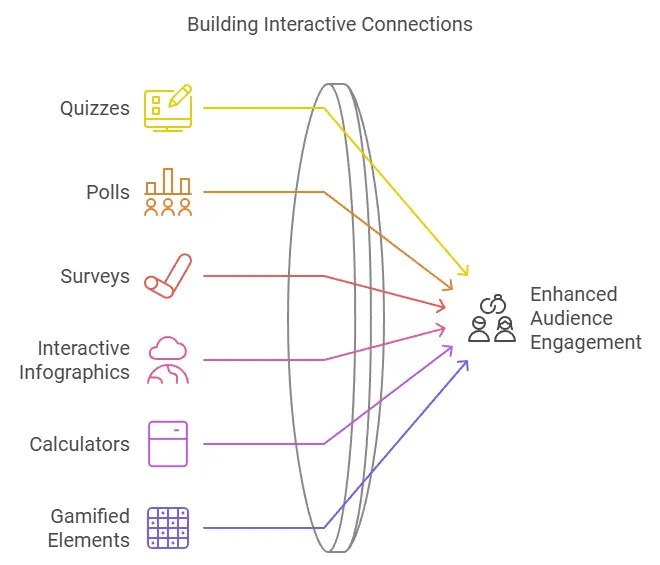
- Why Interactive Content Works
People are enthusiastic about these materials since they engage learners in activities that are more than just reading or watching a screen. They love being part of the solution by partaking in a short questionnaire, survey, or even poll, increasing engagement and sharing.
For instance, a quiz such as “Which Affiliate Marketing Niche is Right for You?” is helpful because it helps learners learn while having fun and creating a package of experiences that makes participants feel that the engaging content is about them. Such interaction fosters audience affinity and loyalty while ensuring a positive experience.
Variations and unique characteristics are evident in these formats, broadly defined as interactive engaging content. A fun element is featured in some quizzes, such as “What Type of Marketer Are You?” and educational aspects. Voting and surveying can be effective and practical. ‘What is the biggest challenge in affiliate marketing?’
This is an example of a question that can be polled and valuable information about affiliate marketing discerned. Decision-making aids such as ROI calculators are helpful and useful in an operational sense. Users can engage with interactive infographics equipped with clickable features that provide more information, and live Q&A or chat features allow users and hosts to interact synchronously. Such engaging content encourages repeated user visits and makes learning more enjoyable – examples include points-based and challenge-based activities.
Analyzing the audience’s preferences is vital in making effective interactive content. For example, novices would be OK with attempting short quizzes, but advanced users may want to tackle challenges in game format and use calculators.
While doing this, focus on making it seamless and consider leveraging tools like Canva, Typeform, or Outgrow to create easy-to-use and beautiful engaging content. Have your interactive components serve the proper purpose, be it a call to action, to encourage purchasing, or to gather opinions. Using the appropriate animations and graphics engages the audience, and placing such quizzes or calculators with score feedback also helps engage and inform the audience.
As examples of Engaging interactive content, we can mention affiliate quizzes with personalized strategies, social media polls, and survey campaigns where audience problems are tested. An earning calculator or a launch checklist is an interactive and practical tool, while minor gamified aspects of, for instance, a brief course with points make gainful education fun.
Interactive content offers several benefits. It draws attention and increases the level of engagement and time spent on the brand’s website or social networks. Fun and informative tools built into the engaging content encourage users to return next time, while the interactive features yield data about the audience, their tastes, and their activities. Moreover, the interactive type of engaging content increases the chances of material being shared as people post quiz and game results.
If used effectively, interactive content can reach a wider audience by cross-promotion, your site, social media, and email campaigns. Phrases such as “Share your results!” or “Try another quiz!” have been mentioned to draw attention and participation in the activities.
Track engagement data to provide insights into what is better to post and “borrow” – from polls to individual posts, polls or portions of blogs, insights from quizzes, and so on into newsletters. Interactive engaging content is not only a source of joy; it also enables the creation of practical experiences that deepen relationships, enhance loyalty, and give the audience a reason to return.
3. Visual Content – Fascinating Data Presentation that Centers the Attention of the Consumers and Gets the Job Done.
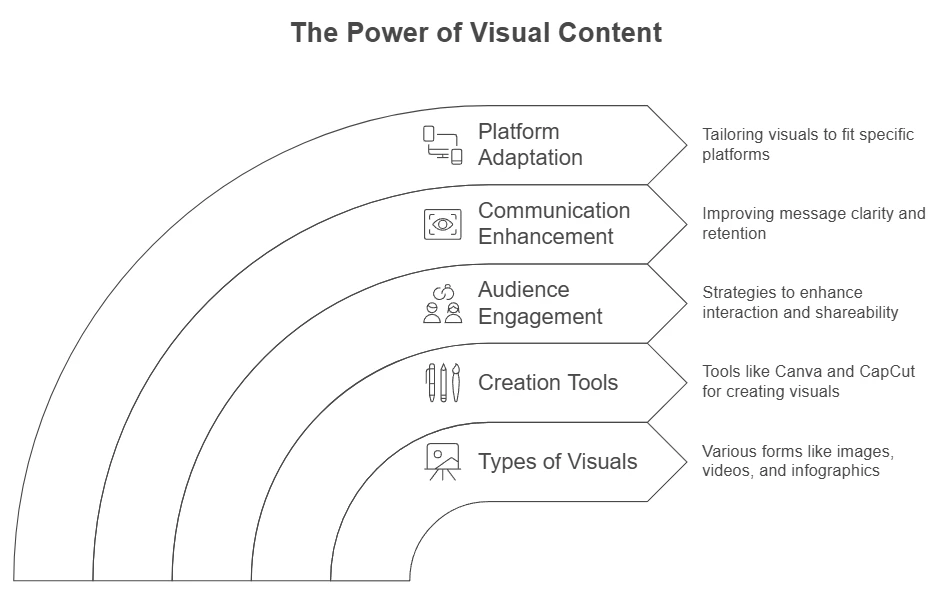
Visual Engaging content takes the form of images, videos, infographics, GIFs, memes, and more, which can be helpful in evoking interest, bearing in mind that messages need to be conveyed in the most concise form. Visuals are created out of images and, as such, are more appealing to the eyes than text.
If it does not explain how terminologies are spelled, then it could be an infographic, a podcast, a video, or even a short film covering the same elements. Visual engaging content not only assists in communication but also helps in holding the audience’s attention.
Because they contain much information, people’s eyes are first attracted to visuals. Quite frequently, an infographic such as ‘How Affiliate Marketing Works’ may include a graphic representation of the various process stages using enhanced sung buckets and imaginative visual decor that is simple to understand. Another helpful medium is video, which injects action into the educational process when used as a tutorial or exposition of ideas.
Be focused, focus on the basics, and don’t try to be elaborate for the sake of artistry when developing visuals. There is no limit to creativity with graphics; use Canva to build them, alter the video with CapCut, or create infographics with Piktochart. More elements – brighter colors, clear fonts, and simple layouts are all appealing, and logos and brand colors will reinforce the idea. Visual elements such as Instagram, YouTube, or even a blog should be crafted with the platform in mind for greater effectiveness.
Visual material comes with various advantages. It fosters interaction on social networks, enhances the memory of the information being communicated, and increases the shareability of your ideas.
A gif or a meme related to the affiliate marketing niche story can add a humorous touch to the engaging content, while a nicely designed carousel on Instagram can effectively present tips or steps in an attention-grabbing manner. Strategic creativity through visual content goes beyond aesthetics as it improves audience engagement and promotes more traffic and interactions on the platforms.
4. Storytelling content
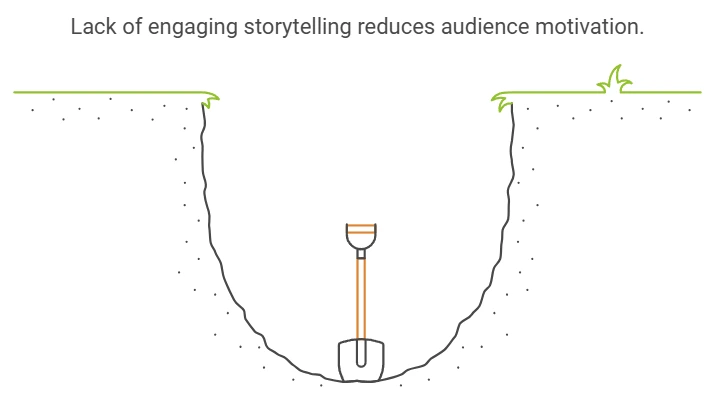
This is how I see the potential of storytelling: as a tool to establish a deep connection with the audience. Who likes a lousy story that relates to them and is full of inspiration as it speaks to their heart and makes the engaging content more appealing and unique? Instead of simply listing cold information, tell stories about how you dealt with specific problems or achieved certain goals. The audience imagines what is realistic and possible for them and where they can seek insight and motivation, hence helping in building trust.
Stories work because they are relatable; your audience knows that you, too, have had your fair share of struggles. They are salient, sitting in people’s minds longer than regular information. Most importantly, they are practical, encouraging audience members to act towards their goals after seeing what you do.
Every great story begins with an attention-grabbing hook or a first sentence that draws readers in. Some possibilities include, “If I hadn’t made that first sale of $25, I would have quit affiliate marketing completely.” Create the context about where you were stuck and the pressing aspects, for instance, having a scarce audience or a complete absence of revenue. Make sure the focus is on the turning point—what efforts or choices changed the scene of the problem.
Use the last part of the speech to summarize the main lesson, including the most critical points that the audience can utilize in their pursuits, such as adding value and consistency.
Such stories make the audience connect more with the Engaging content in a more motivating and impactful way. Because these things are practical, genuine, and interesting, the audience is more likely to remember everything that they witnessed and motivate themselves to pursue their success.
5. User generated content (ugc)
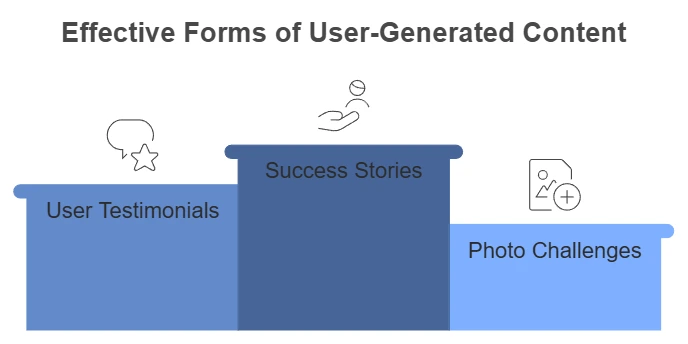
User-generated content (UGC) consists of Engaging content such as pictures, video reviews, photos, or accounts created by the audience. Such engaging content can be very effective because it is original and based on real events and people. For instance, a client who has received their first affiliate commission may encourage others while reaffirming the brand’s worth.
What can you say about user-generated content (UGC)? You may have noticed that UGC is winning, and there is a valid reason. UGC has authenticity that feels true and real and, therefore, trustworthy. It fuels social proof, showcasing real victories and instilling confidence in others to use your business. UGC also deepens audience relations as part of community building, and it’s cost-efficient because the engaging content is generated by the audience, thus creating a lighter workload for you.
For example, ask users to share their experiences in UGC, such as “What was your first experience with the affiliate program?” Ask for submissions by suggesting that the best post gets something in a contest. Using branded hashtags makes it easier and more effective to gather and create all kinds of content and showcase contributors and their engaging content on social media, websites, newsletters, and so on.
But UGC can take many forms, for example, user testimonials and reviews—these are user-generated honest feedback about the business; photo challenges—measure results by asking users to upload photos of their outcomes; and, the best for last, success stories—for instance, “Here’s how I made my first 500 dollars.” Such formats are later trusted and are encouraged to follow.
UGC has many advantages. It raises engagement levels by extending an invitation for involvement, drives sharing as customers advocate for the brand in their circles, and creates confidence through appropriate materials. It also drives and inspires action; success stories encourage others to interact with your brand.
To conclude, UGC builds trust, engages communities, and reduces effort. By embracing and rewarding input from your followers, you generate real and precious engaging content that leaves a deep impression, making people want to interact with your brand.
6. Trending content : The Anatomy of Article Writing
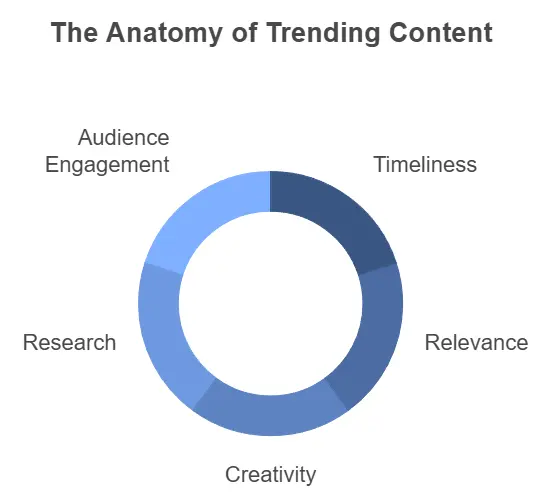
Trending Engaging content always has to do with burning issues or events, leading to higher viewer interest and retention. Creating content around current topics shows that you have relevant information and are involved in the matters at hand. For instance, there is a vast shifting event in affiliate marketing. It would be beneficial to write a post where marketers say: “what does this update mean for them?” and share their opinions or jokes regarding the content.
It would be right to say that trends can work because they improve scope—people are concerned about, follow, and engage with trends, thus building the content. Also, timely posts and updates will get more comments, shares, and interactions and thus help keep the audience entertained. More importantly, it shows your audience that you are relevant and in tune with the market, which adds to your credibility.
BuzzSumo, hashtags on social media, or Google Trends are good places to begin researching trends. Make sure to select subjects relevant to your area to ensure that your audience remains interested. Enter discussions with a broader outlook, suggest practical solutions, and even try to poke fun at issues surrounding a topic. Speed is also vital in publishing content, as it will still be new.
For instance, when a new function for a social media platform is introduced, one may write a post or create a video entitled “How to Use [Feature] to Boost Affiliate Sales.” To increase connection and reach, combine it with a brief video or social media content. People will appreciate both fun and value, and partners will repost such engaging content.
Trending content is more productive when it is timely, relevant, and inventive in itself. It is possible to have such focus by being real and seeking trends your audience would want to discuss. All within the content is going to be fresh.
7. Long-Form Content: Providing All-Inclusive Coverage and Value.
Combining these seven different engaging content forms will ensure your audience stays interested. Use blog posts as an educational tool, quizzes and polls as sources of fun, and develop narrations as
Long-form engaging content takes a deep approach to a particular subject, allowing several formats, such as e-guides, eBooks, or Blog Posts. It makes it easy for readers since they can get everything they seek within a single piece, which is helpful for novices who need more knowledge or experts who need more profound research. For instance, an eBook titled “The Ultimate Guide to Affiliate Marketing” can discuss niche selection, traffic generation, and monetization so its users can use it as a reference.
This type of content works immensely better since it can serve as a one-stop source of information, which cuts the reader’s search for alternatives. It constructs credibility by demonstrating knowledge and reliability. Furthermore, long articles are given preference by search engines as long and well-organized text is given a higher ranking on a page. Long-form content increases the length of time a particular audience spends and hence encourages sharing.
When creating long-form engaging content, the process begins with the definition of the topic and a focused view, which should be wide enough to allow for elaboration but also targeted to the audience’s interest. Use headings, sections, sub-headings, and bullets to structure the document. Use visuals such as charts, graphs, infographics, or videos to supplement long pieces of text to make comprehension easier. Illustrate by providing helpful information that the readers can employ, such as examples, recommendations, and actual use cases. Editing the article with strategically placed keywords, internal links, and attractive meta tags enhances online visibility and reader engagement.
Some examples of such content are long YouTube videos on topics like ‘How to Build a Six-Figure Affiliate Marketing Business,’ an eBook called ’10’10 Steps to Affinity Marketing Success’, YouTube videos showing revenue increases, and the white paper on ‘Digital Marketing in the Future.’ These formats help to give additional insights into the topic and help build one’s credibility, thus applying to the audience.
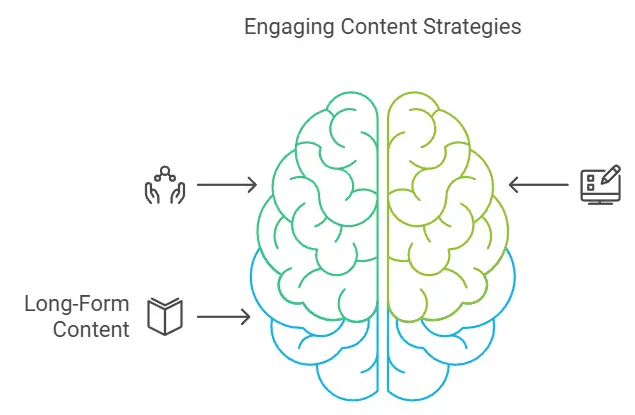
To unlock the full potential of longer-form content:
- I am eager to refresh it with the latest trends and information.
- To expand exposure, use parts of such content in shorter blogs, video clips, or sound bites.
- Offer sharing opportunities and invite your audience to capture salient points.
Furthermore, long-form content can be promoted by selling downloadable templates that require email signups to accumulate more followers.
Long-form content also adds significant value by empowering, captivating, and positioning you as an expert. When done correctly, it captures attention, instigates action, and builds loyalty over time, which is why it forms the basis of any content strategy.
Sources of motivation. Use images for attention, UGC for credibility, trends for craziness, and long-form content for usefulness. You will engage your audience and keep them thirsty for more by providing choices!
Conclusion
You are combining these 7 Types of Engaging Content that Will Keep Your Audience captivated and Interested. Use blog posts as an educational tool, quizzes, and polls as sources of fun, and develop narrations as sources of motivation. Use images for attention, use UGC for credibility, use trends for craziness, and use long-form content for usefulness. You may use writing tools like Affpilot, and Jasper, to create such an article. You will engage your audience and keep them thirsty for more by providing choices!

